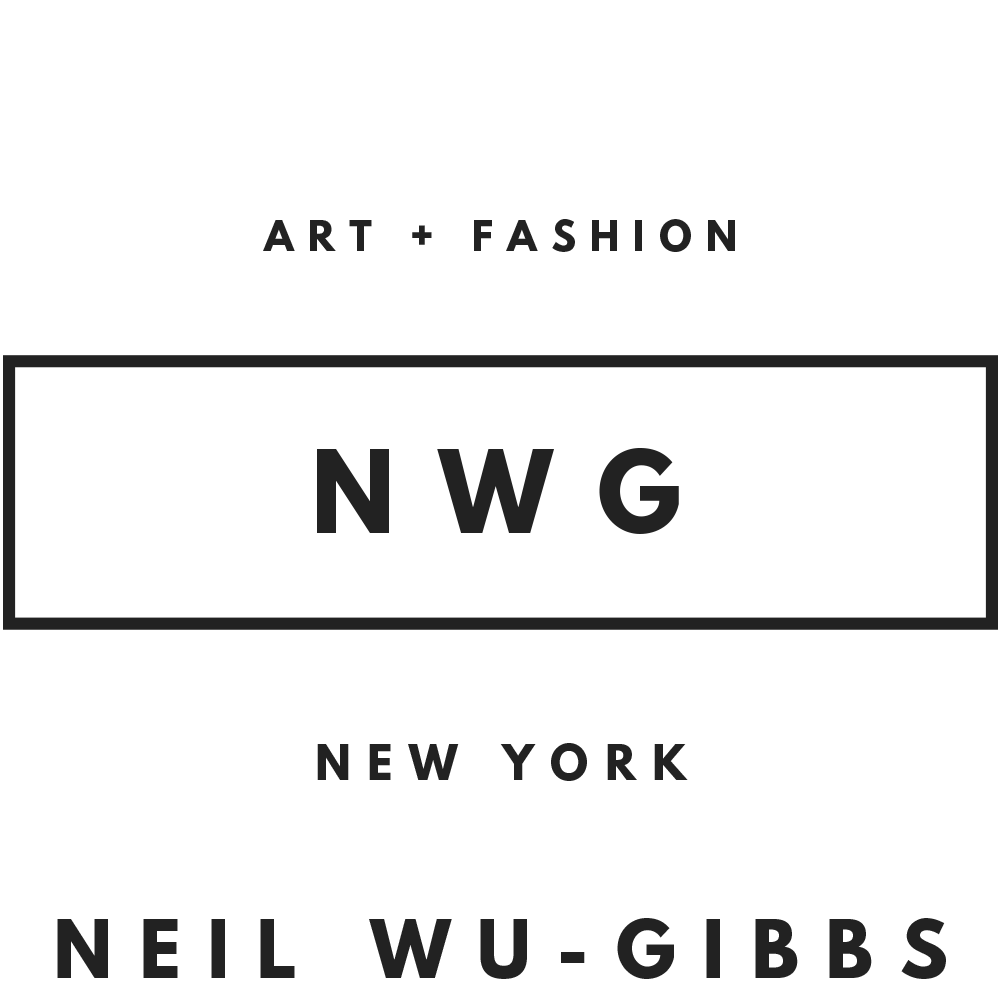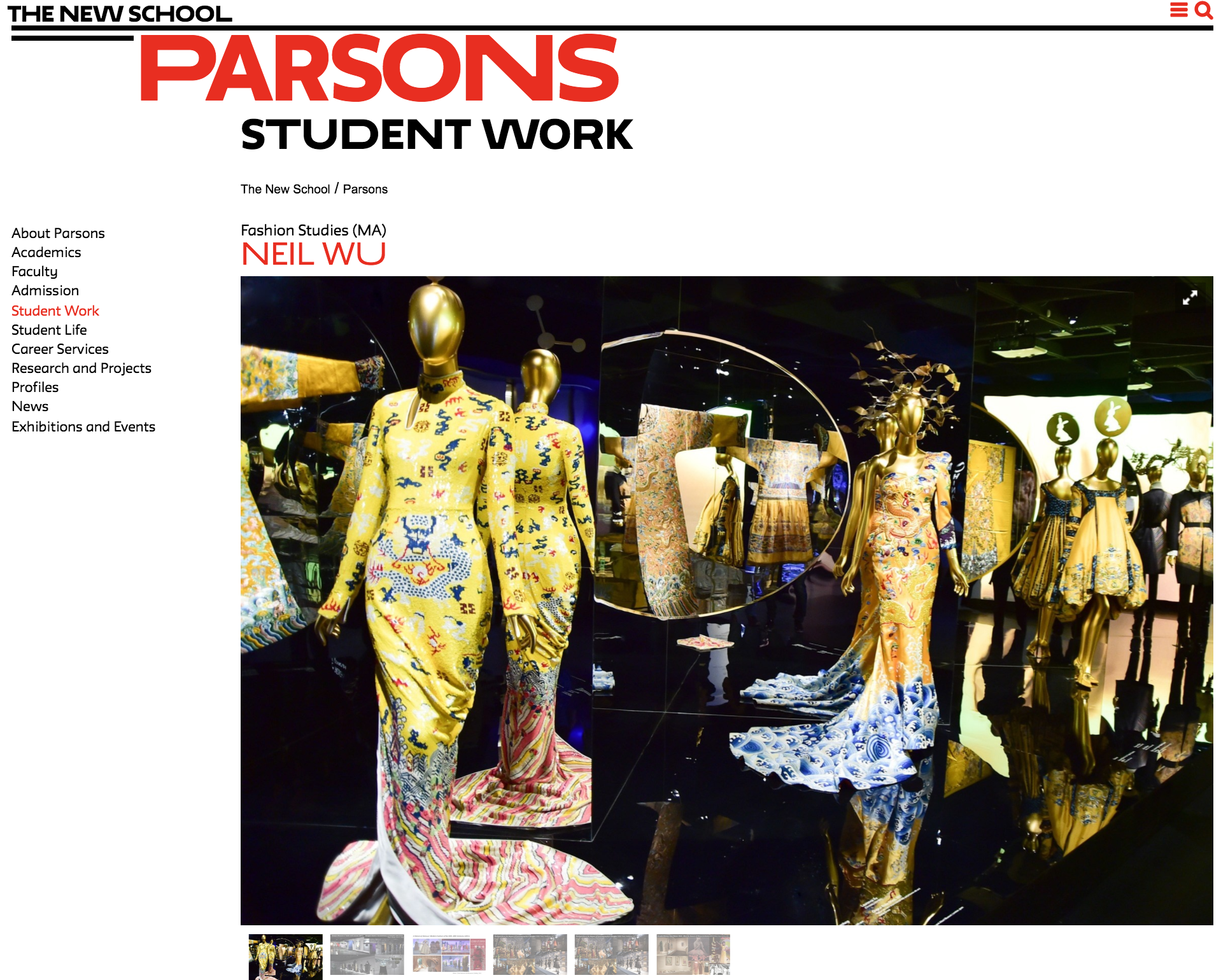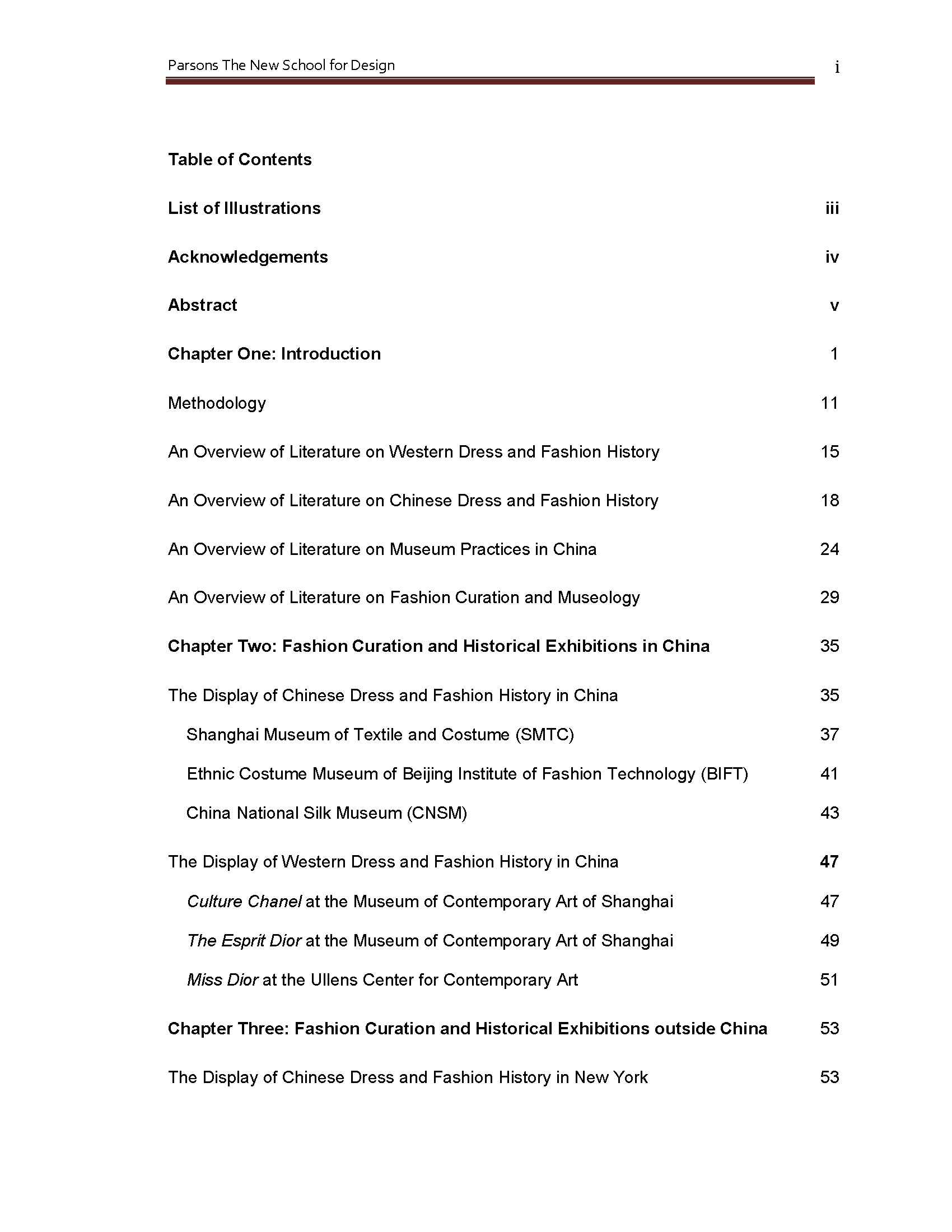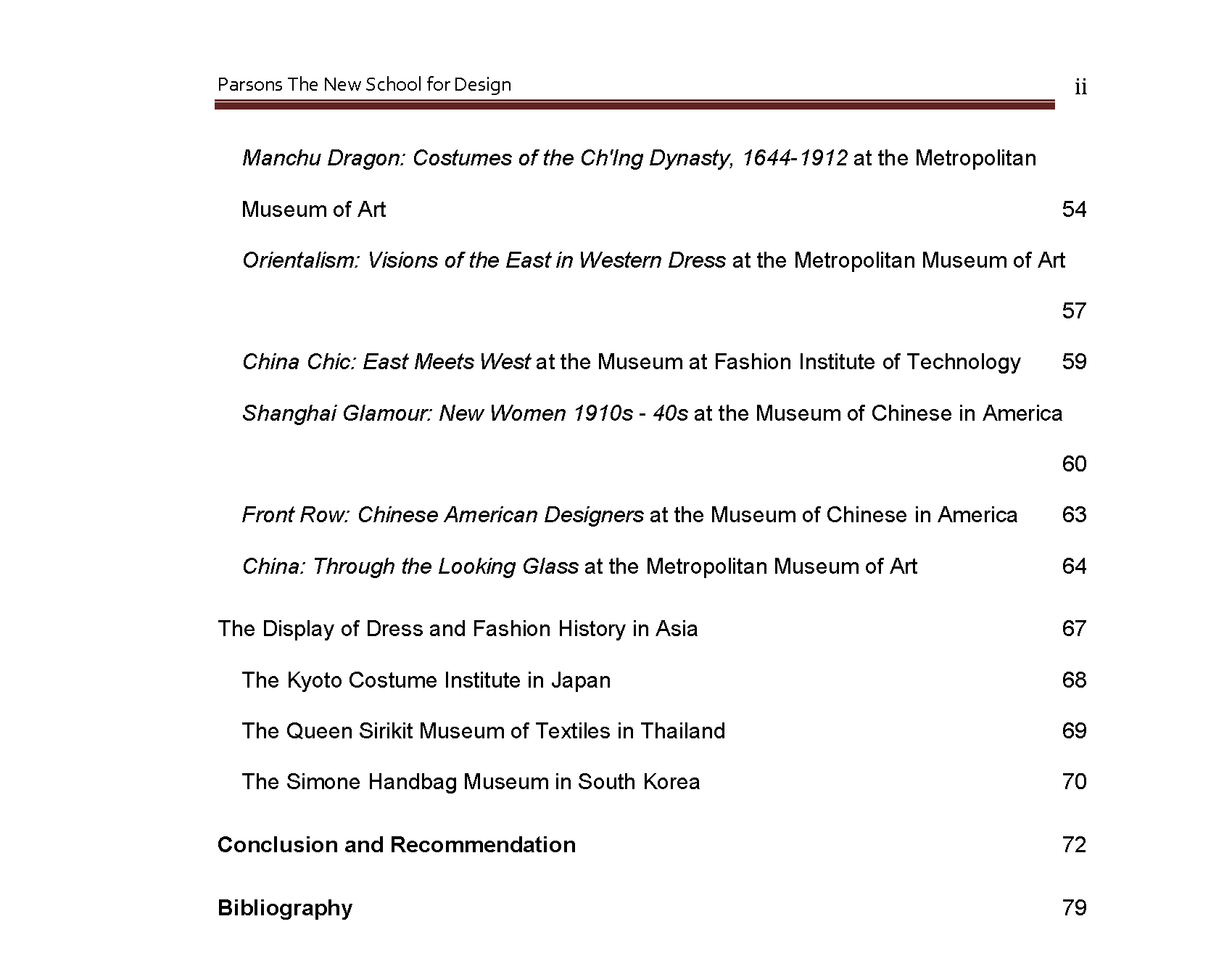My MA Fashion Studies 92-page thesis Beyond the Looking Glass: Curating and Exhibiting Fashion History in China has been chosen as exemplary work from the class of 2016, and is featured on the Parsons Student Work Website. Furthermore, I presented my graduate research at the 2016 Parsons Festival: Art & Design History & Theory Symposium.
Thesis Abstract
With the power of technology and social media, the rising global interest in fashion is mirrored in the increasing number of fashion exhibitions appearing in museums. Defining Chinese fashion and the unfolding of fashion curation in China helps us to understand history and museum practice in the interconnected world that we live in today. The boundaries between the West and the East are becoming obscured as exchanges and communication increase on political, economic, social and cultural levels. As a result, the notions of “fashion,” “dress,” and “costume” are brought beyond the looking glass and take on a global perspective of how Chinese fashion history may be interpreted.
Numerous museums in China boast extensive collections of well-preserved historical dress, ethnic costumes, and textiles. These museums are currently facing multiple challenges and opportunities, as fashion museology is taking precedence over dress museology. The study determines the extent to which the sartorial choices of Chinese men and women through different historical periods have been shaped by political, social and cultural factors as well as international influences of Western aesthetics. It compares and contrasts how historical and contemporary Chinese fashion has been interpreted via costume displays and exhibitions in Chinese museums and in the West, specifically New York, since the late twentieth century. It also examines how Western fashion has been shown in China in recent years, and how national history and identity have been conserved through the medium of fashion in Asia.
Previous studies have failed to comprehensively address Asian fashion curation practices; therefore, this study represents a contribution to the interdisciplinary field of fashion studies. It helps outline new practices of fashion curatorship, and formulate new theoretical approaches for more inclusive fashion museology. The most effective practices of curation will often combine theory and connoisseurship, or integrate materiality into abstract theory.




